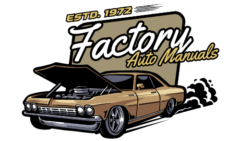
When it comes to doing vehicle maintenance and repair, one invaluable resource stands out: the repair manual. Whether you’re a seasoned mechanic or a DIY enthusiast, understanding the nuances of repair manuals can make all the difference in keeping your vehicle running smoothly. In this comprehensive guide, we’ll delve into what repair manuals are, their essential elements, and how to make the most out of them.
What Exactly is a Repair Manual?
At its core, a repair manual is a technical document packed with detailedinstructions on how to repair and maintain a vehicle or equipment. It serves as a guiding light for mechanics, technicians, and enthusiasts alike, offering step-by-step procedures, diagrams, and troubleshooting tips. Unlike owner’s manuals, which provide basic operational information, repair manuals dive deep into the nitty-gritty of fixing mechanical issues.
Understanding the Terminology
Repair manuals come by many names – service manual, shop manual, workshop manual, or factory service manual. This variety can sometimes confuse users, especially when searching for the right manual. Additionally, the decision of whether to opt for an original equipment manufacturer (OEM) manual or a third-party one adds another layer of complexity.
Essential Sections of a Repair Manual
- Chassis: This section covers the vehicle’s frame and main structure, including repairs to steering, suspension, driveline, and brake systems.
- Powertrain: Encompassing more than just the engine, the powertrain section provides instructions for repairing the engine, transmission, exhaust system, and fuel system.
- Electrical System: From wiring diagrams to troubleshooting electrical components, this section is a must for addressing any electrical issues in your vehicle.
- Body: Focused on repairs related to the vehicle’s body and painting, this section ensures your vehicle looks as good as it performs.
- Maintenance and Lubrication: Vital for prolonging your vehicle’s lifespan, this section outlines maintenance schedules and procedures for essential tasks like oil changes, fluid checks, and filter replacements.
OEM vs. Third-Party Manuals: Making the Right Choice
While third-party repair manuals offer convenience and affordability, OEM manuals provide precise, model-specific information straight from the manufacturer. Opting for an OEM manual ensures accuracy and reliability, reducing the risk of incorrect repairs or further damage to your vehicle.
Safety Concerns with Free Downloads
While free repair manuals might seem like a cost-effective solution, they often come with significant risks. Inaccurate information, outdated instructions, and potential malware threats pose serious dangers to both your vehicle and personal data. Investing in a reputable repair manual is a small price to pay for peace of mind and accurate guidance.
The DIY Advantage
There’s a sense of pride and accomplishment that comes with tackling vehicle repairs yourself. Not only does it save money, but it also allows you to work on your schedule and deepen your understanding of your vehicle. With the right repair manual by your side, DIY maintenance becomes a rewarding experience.
Choosing Between CD and Book Sets
The choice between a CD and a physical book set boils down to personal preference. While CDs offer convenience and easy access to digital content, traditionalists may prefer the tactile experience of flipping through a physical manual. For older vehicles, paper manuals remain the go-to option, ensuring compatibility and reliability.
In conclusion, a repair manual is more than just a guide – it’s a companion on your journey to vehicle maintenance mastery. By understanding its nuances and leveraging its wealth of information, you can keep your vehicle running smoothly for years to come.
